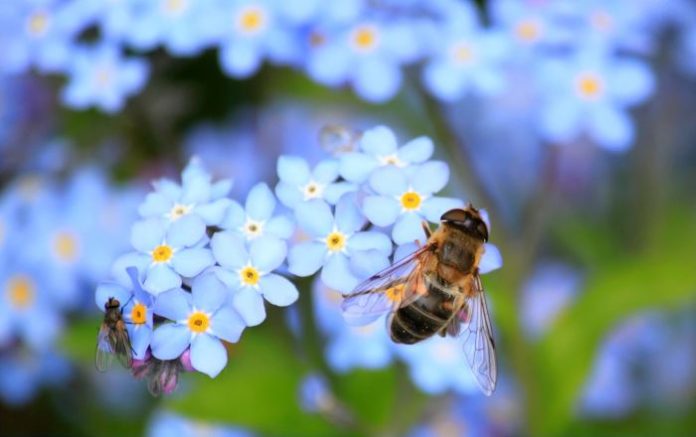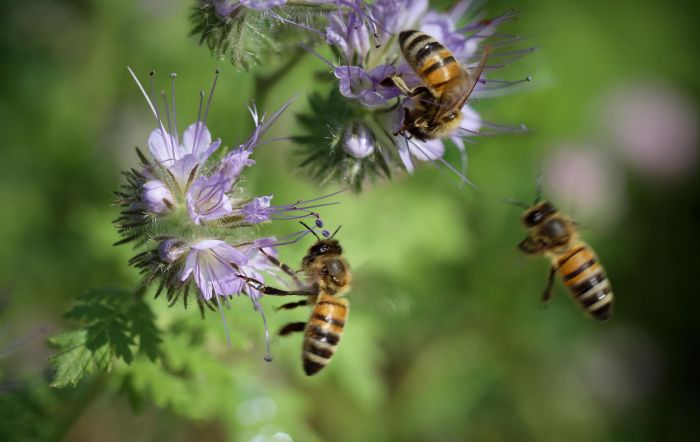
In order to contribute to the knowledge and protection of pollinating insects, which are now more threatened than ever, a group of young researchers, led by Prof. Andrea Di Giulio, and composed of PhD students, scholarship holders and students of the new master’s degree course in Biodiversity and Environmental Protection (BioTA) of the Department of Science of the University of Roma Tre, is engaged in research that is taking place in various ecosystems: from Rome to Circeo, from Sardinia to the Amazon Rainforest in Peru.
Pollinating insects are defined as those pollinating insects that are able to transport pollen from one flower to another, ensuring fruit formation and thus plant propagation. The honey bee is considered the pollinating insect par excellence, so much so that it is also the star of World Bee Day. It is best known for its ability to produce honey, but the remaining non-honey-producing wild bees, as well as butterflies, wasps, bugs, flies, beetles and crickets are also important pollinators, on which both plant species in natural ecosystems and agricultural systems depend. According to WWF data, about 35% of global food production, in fact, depends on the ecosystem service of pollination.
However, the International Union for Conservation of Nature (IUCN) points out that on a global scale more than 40% of pollinating insect species are at risk of disappearing due to habitat degradation and fragmentation, the effects of intensive agriculture, climate change and the presence of new competing species and exotic pests.
With the twofold aim of contributing to the knowledge and protection of the species present in the various habitats, and to investigate the nature of the plant-insect pair, a group of young researchers, led by prof. Andrea Di Giulio, and composed of doctoral students, scholarship holders and students of the new degree course in Biodiversity and Environmental Protection (BioTA) of the Department of Science of the University of Roma Tre, is engaged in the study of pollinating insects with research that is carried out both on the national territory, in anthropised environments, such as the city of Rome and its rural suburbs, and in areas considered to be biodiversity ‘hotspots’ on a global scale, such as the Amazon Rainforest in Peru.
These include the ‘Monitoring Pollinators in the Circeo National Park’ project, which is carried out in collaboration with the Circeo Park Authority and involves the sampling of bees and diurnal butterflies both in natural areas and fragile habitats, such as the promontory and sand dunes of the Sabaudia coastline, and on farms. The aim is to determine the species present, comparing them with the last inventory conducted by researcher Mario Comba, updated in 1998.
The ‘Pollinators of Rome’ project, financed by the National Operational Programme (PON, Action IV.5) of the Ministry of Universities and Research for research paths linked to ‘green’ issues, and carried out in collaboration with the company Agriconsulting, focuses on the study of the diversity of bees and flower beetles in the protected natural areas of the city of Rome, with the aim of assessing for two years the species present in the Capitoline ‘green islands’ and defining the plant species visited by these insects in the metropolitan context.

Added to this is the project ‘Pollinating Insects of Culuccia Island (Sardinia)’, in collaboration with the Nature Observatory of this small wild island off the Maddalena Archipelago, still largely unexplored from a naturalistic point of view. An ‘oasis of wildlife protection and capture’, as desired by the Region of Sardinia, and part of the Natura 2000 European network of protected areas. The project, which started in 2022 and will last five years, is aimed at enriching knowledge on the various Sardinian pollinators, including bees, butterflies, beetles, dipterans and possible endemisms.
Finally, the Department of Science is collaborating on the project ‘The Stingless Bees of the Amazon Rainforest of Peru’ together with Sapienza University of Rome and the National University of Tarapoto (Peru). Started in 2019, it will end in 2023 with the aim of contributing to the knowledge of the species present in one of the richest ecosystems in the world in terms of biodiversity, and at the same time among the most threatened to disappear due to deforestation.
“For the preservation of pollinators,” says Prof. Andrea Di Giulio, entomologist at the Roma Tre Department of Science, “faunal inventories and monitoring are essential, both in areas that have not yet been explored for this group of insects, and in those where interventions of this type have indeed been carried out, but whose last data date back to the last century. Consider that as far as wild bees are concerned, in Italy, the last official list was compiled by researcher Guido Pagliano in 1995, listing 944 species. Who knows what the situation will be now’.
‘In addition to these projects,’ Prof. Di Giulio continues, ‘the Department is also engaged in the setting up of an entomological collection on pollinators in the Museum of Zoology of Roma Tre and a study of functional ecology, i.e. an ultrastructural analysis of those morphological characters involved in plant-insect relations that makes use of state-of-the-art instrumentation in the field of microscopy: the scanning electron microscope (SEM), at our University’.



































